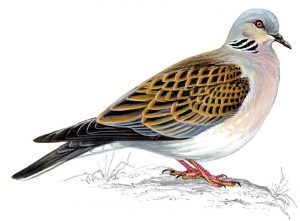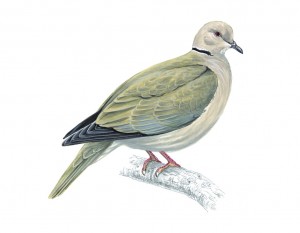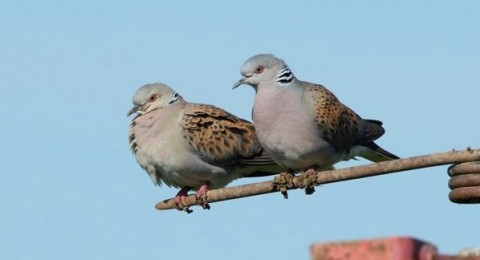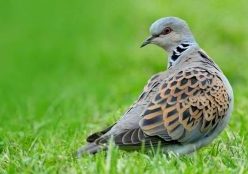Turtle doves visit England for the breeding season, arriving in late April and May and leaving again between July and September and are therefore almost exclusively seen in the summer months.
The first sign that a turtle dove is nearby is often its distinctive song, a gentle purr that was once an evocative sound of summer (click here to listen). This is often delivered by male birds from a bare or deadwood branch of a tall tree on the edge of woodland or in a hedgerow.
At other times, turtle doves are generally quite secretive and difficult to see. Their most similar relative in the UK is the collared dove, differentiated by its larger size and plainer white-grey body. Look at the illustrations of these two species below to see the differences.
Look out for these identification features:
- smaller than any other pigeon or dove in the UK, slightly larger than a blackbird
- orange eyes
- black and white striped patch on neck
- black tail with thin white edge
- chestnut and black diamonds on wings
- pale grey-lilac head and breast










